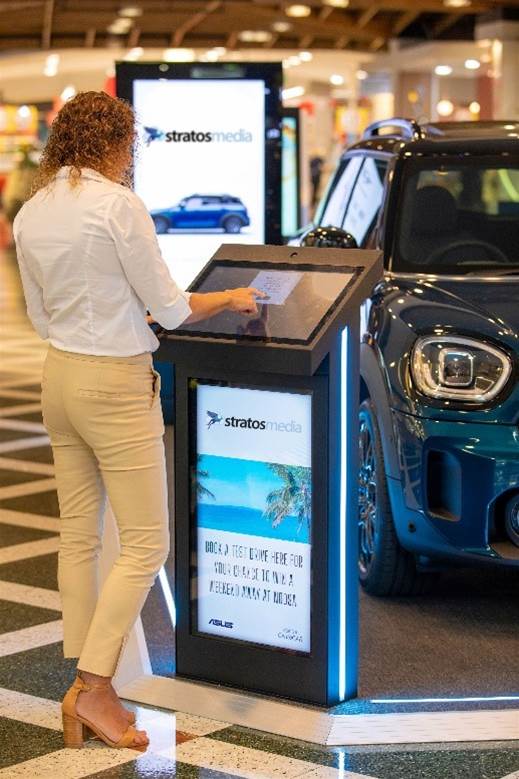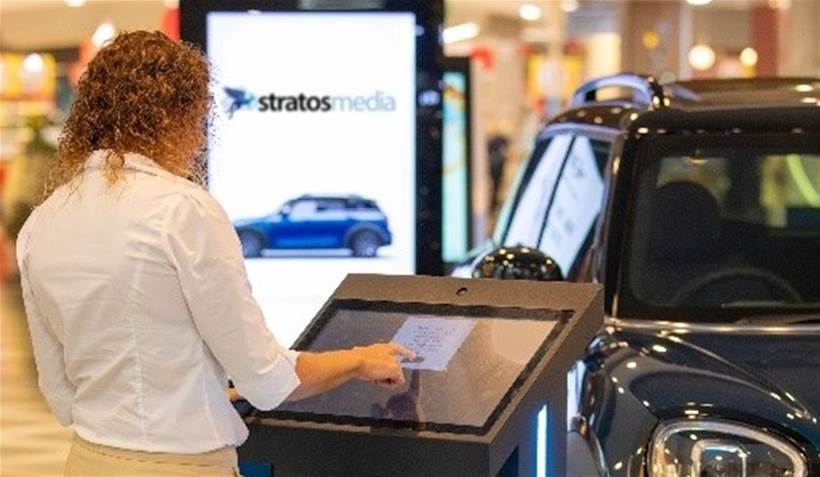Anyone familiar with the history of tiny PCs may shudder at memories of underpowered computers that overheated and crashed all too often. Matters weren’t helped by the need to us highly stressed, cheap fans for cooling and components that ran hot, including mechanical hard drives and old-gen processors.
Of course, things are different now. Intel’s NUCs have shown that powerful PCs can run applications such as interactive ordering systems almost ubiquitous in Australia’s McDonald’s chain. But Intel is not the only game in town – vendors such as Asus offer small, robust, IoT-friendly computers running Chrome OS and StratosMedia’s digital signage in many shopping centres.
So, what is the state of digital signage technology, and what’s required to integrate it with the Internet of Things?
How IoT can enhance digital signage
Digital signage can transform the way people shop, and enhance how companies sell products. To meet the ever-growing expectations of customers, signage is becoming increasingly sophisticated, with the integration of interactivity and other features. This requires powerful, discreet, remote-managed, embedded computers. It must be able to deliver data to remote locations for processing. This remote management of multiple, networked devices and the processing of such data is a hallmark of the Internet of Things. And it must be prevalent if customers are to actively go looking for it.
What’s required to operate IoT-based digital signage?
Reliable digital signage that’s capable of producing a robust and reliable, lag-free, customer experience, in an unobtrusive device, requires capable hardware. Here are five requirements for a tiny, IoT-friendly PC capable of achieving these goals:
1. Small size
A tiny PC can be easily hidden behind a screen. This means the design of the plinth that supports the screen does not need to take any bulk of the additional device into account, in terms of volume and weight.
2. Robustness
Commercial equipment (including digital signage) isn’t treated well and so it must be solidly built to withstand knocks, which means having few moving parts. It must also withstand all manner of harsh environmental situations, especially heat and humidity.
3. Fast, reliable networking
The introduction of Wi-Fi 6 has been a great enabler of IoT devices. The increased range and performance benefits are self-evident, but Wi-Fi 6 has also been heavily optimised to reliably support much-higher numbers of IoT devices on a network.
4. Automatic updates
Multiple digital signs are often installed in many locations in a single rollout. Updating these (and all other IoT devices) quickly becomes a headache if a site-visit is required. Fortunately, Chrome OS and more-recent Windows operating systems can download and install updates automatically and do so at times where customers aren’t around.
5. Fast components
Recent generations of PC components have been designed with mobility as a critical requirement. This development has paid off – processors and RAM are faster than ever and yet require less power and emit less heat. Fast, solid-state drives have plummeted in price and have replaced slow, less-reliable mechanical equivalents.
While these benefits primarily benefit digital signage manufacturers, the resulting performance boost also enables a lag-free customer experience capable of elaborate interactions. Low heat output and fewer moving parts further improve reliability.
What’s an example of digital signage in action?

StratosMedia used Asus Fanless Chromebox PCs to produce digital signage that helped Conquest Staging create interactive, customer-driven car discovery kiosks.
Caption: The StratosMedia digital signage kiosk was powered by an Asus Fanless Chromebox micro PC.
These stations enabled visitors to access FAQs, book a test drive from their home or a dealership and use a car configurator to identify their preferred colour and specification. They could also request the resulting information be sent to their email or phone.
The goal of these digital signage kiosks was to help understand customer demographics and requirements (potentially in real time) in order to provide A.I.-derived insights for car manufacturers. The resulting analytics also helped identify any UX issues and ensure the customer experience was optimal.
The signage can also be managed and updated remotely and comes with a lockable VESA mount, cable lock and secure mounting for the Asus Fanless Chromebox.
Conquest Staging was so impressed with the high levels of customer satisfaction at the digital signage kiosks, it planned to install them in other shopping centres. CEO Tristan Kurz said, “We recognised the need to take our product directly to our customers in a friendly and customer-driven interactive experience and to have the ability to capture deep visitor analytics in real time.”
The response to the digital signage from the car manufacturers themselves has also been positive with the real-time user analytics (and other benefits) demonstrating a strong return on investment.
What is an example of a modern micro PC?
The IoT device that drove Conquest Staging’s rollout was the Asus Fanless Chromebox. It is designed to power a wide range of industrial applications that benefit from IoT, including digital signage, kiosks, warehouses, point-of-sale and wayfinding.
It utilises efficient 10th Generation Intel processors which are passively cooled and each device can support up to three, 4K displays simultaneously. The fanless, aluminium chassis resembles a giant heat sink for improved heat dissipation and silent running. In addition to the solid construction’s inherent robustness, it has undergone rigorous tests to ensure 24/7 reliability. These include vibration tests and harsh environmental tests (such as subjecting the PC to 35-degree heat and 80 per cent humidity) for 168 hours at a time. The solid chassis’ resistance to dust-intrusion further helps enhance reliability and reduce maintenance.
The Asus Fanless Chromebox also features USB-C and USB-A 3.2 Gen 1 ports for fast wired connections, Wi-Fi 6 connectivity, up to 16 GB of DDR4-2666 memory and up to 512 GB of M.2 SSD storage. The tiny PC only weighs 1.2KG and has diminutive dimensions of 207 x 148 x 32 mm.
It runs on Google Chrome OS and subsequently is compatible with the entire Play Store and security apps.
What else does ASUS offer the world of IoT?
Asus has a broad portfolio of IoT products, with solutions in many fields, such as AI security, facial recognition, healthcare and automation. For example, its AI Security Solution is a facial recognition system for security monitoring at schools and workplaces. A tangential product is Asus’s IoT Face Recognition Edge AI Dev Kit, a one-stop solution for identifying faces and other key personal markers and can infer and assess attributes such as age, gender and head orientation.
How can I find out more about the building blocks of IoT solutions?
Asus is a sponsor of Australia’s premiere Internet of Things conference, IoT Impact, which takes place in Melbourne on June 9. Attend the event to see an ASUS representative discuss the building blocks of IoT solutions. See the agenda here, but places are limited and running out fast so buy your ticket now.







